Co-founder of the studio Mr. X in 2001, Aaron Weintraub oversees many films like A HISTORY OF VIOLENCE, SCOTT PILGRIM VS THE WORLD or REPO MEN. He recently completed the VFX supervision of THE FACTORY.
What is your background?
6 years 3D and compositing for commercials, music videos, broadcast design. 11 years feature films and co-founded Mr. X in 2001.
How was the collaboration with Joseph Kosinski and Eric Barba?
We flew down to Digital Domain (DD) as we were first being considered for the project to meet with Eric, who briefed us on the sequences, the design and style of the show, and the work we would be undertaking. Everything we worked on went through Eric first to present to Joe. Dailies sessions were done first with Eric to review the work and when a shot was approved, it went into Joe’s dailies to be reviewed. As most of the dailies sessions were done while we were in Toronto, we were video-conferenced into DD’s theatre so we could see what they were seeing, and discuss the work.
Can you tell us how Mr X got involved on this show?
Originally DD was to be the only vendor, but as shooting progressed, the size and scope of the VFX work grew beyond anyone’s expectations. At that point, Disney and DD began looking for other vendors that they could partner with who were capable of handling the work. They visited companies all around world, looking at not only the quality of their past work, but also the pipeline, infrastructure, and talent pools that were available. After being vetted technically and artistically, we began a back-and-forth bidding process while DD determined the most suitable sequences and shots for us, and were ultimately awarded the work.
What sequences have you made?
We worked on the “Rectifier Interior” and “Rectifier Bridge” sequences, which take place in the film just as the Solar Sailer docks in Clu’s mountainside base (the “Rectifier”), and ends just before Clu and the Blackguards jump out of the throneship to begin the Lightjet Battle chase sequence. The sequences include the Quorra/Rinzler fight, the creation of Clu’s army, Clu’s speech, Sam reclaiming the disc and fighting with Rinzler, Quorra’s rescue, and the Lightjet escape.
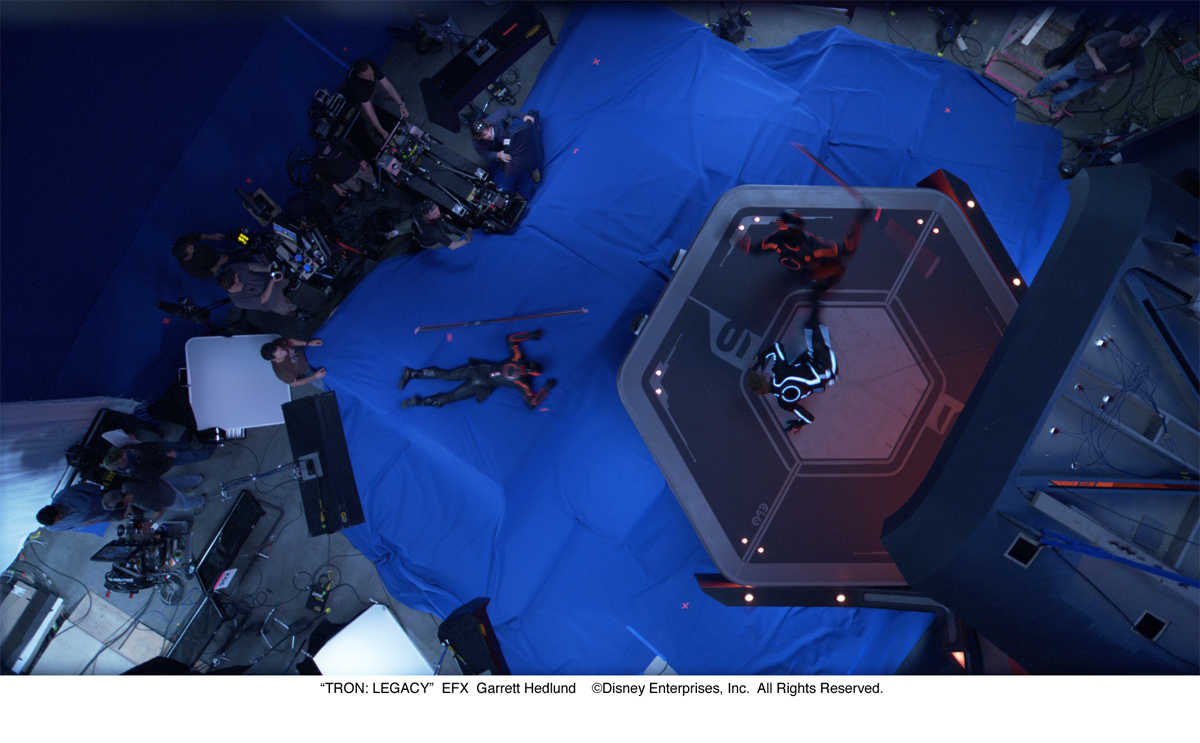 |
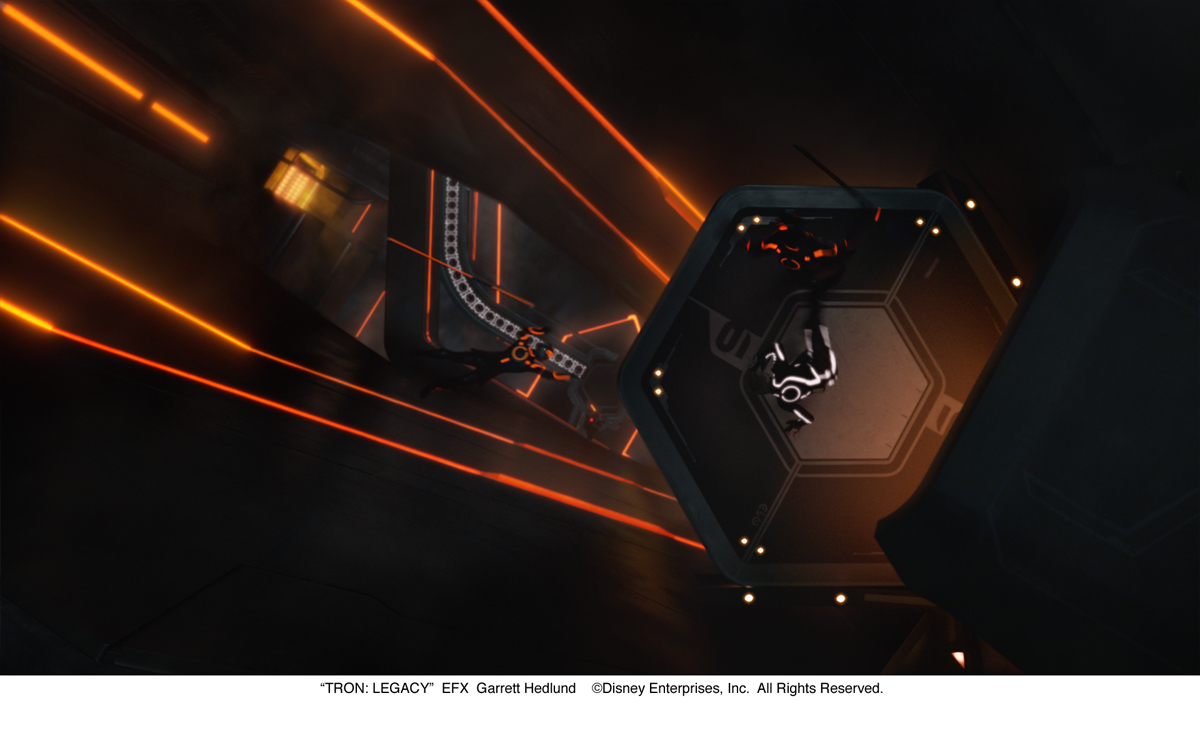 |
Have you received any assets from Digital Domain?
Yes, many. The Rectifier is populated by a lot of vehicles that came to us basically finished from DD, since they appear in other parts of the film (tanks, recognizers, military vehicles, throne ship, sentries, 3-man lightjet, character digidoubles). For assets specific to these sequences that hadn’t been fully completed by DD, we received the previz models, along with all the designs and concept art to allow us to clean up the assets and detail them out. Most of our asset design time was spent on the actual rectifier itself, both the exterior, as well as the detailed interior with its complex ceiling catwalk and crane gantry systems. We did a lot of work on the Solar Sailer as well.
How was the collaboration with the teams of Digital Domain?
There was very tight collaboration with DD. Shots went back and forth all the time, with both companies working on different pieces of the same shot simultaneously. We tried to work to maximum efficiency so that there was as little duplication of work as possible. From the beginning, we knew that a portion of our shots would be shared with them, especially the Clu head shots. For those shots, DD would send us the initial tracked camera which we would use to generate the environment, composite everything except for the head, and send the Nuke script and elements back to them along with the precomped shot minus the head. The Jarvis de-rezz was another example of this, where DD completed the effect since they already had the de-rezz tool working on their hands. There were also a number of shots where we completed modeling, layout, and animation, and handed geo back over to DD for final lighting, rendering, and compositing. Our pipelines needed to be very compatible, using all the same technical specifications for scene scale, world coordinates, camera specifications, naming conventions, etc.
What was the actual size of the set?
In the Solar Sailer and docking area inside the Rectifier, one and a half cargo pod lengths of Solar Sailer were built, and these were only built three cars wide (the fourth one was added digitally). There was a single exit staircase built that led down to a piece of floor just large enough to accommodate the Quorra/Rinzler fight. There was a small section of catwalk rails built, again just large enough to contain the action of Sam and Kevin Flynn. For Clu’s speech, basically only the floor and podium existed practically. The throne ship was the most complete set, with the throne room itself being mostly all practical except for the ceiling and the cones of silence. The bridge area only had a floor created, and there was a single elevator platform extending out the back side.
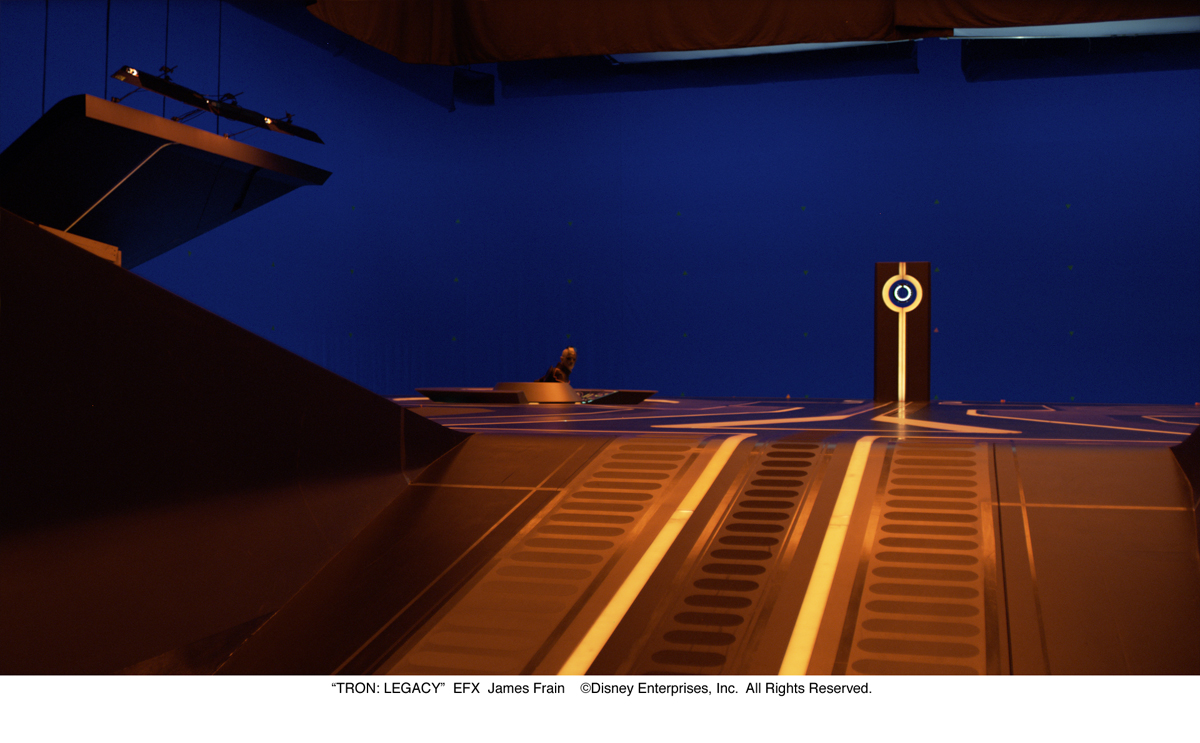 |
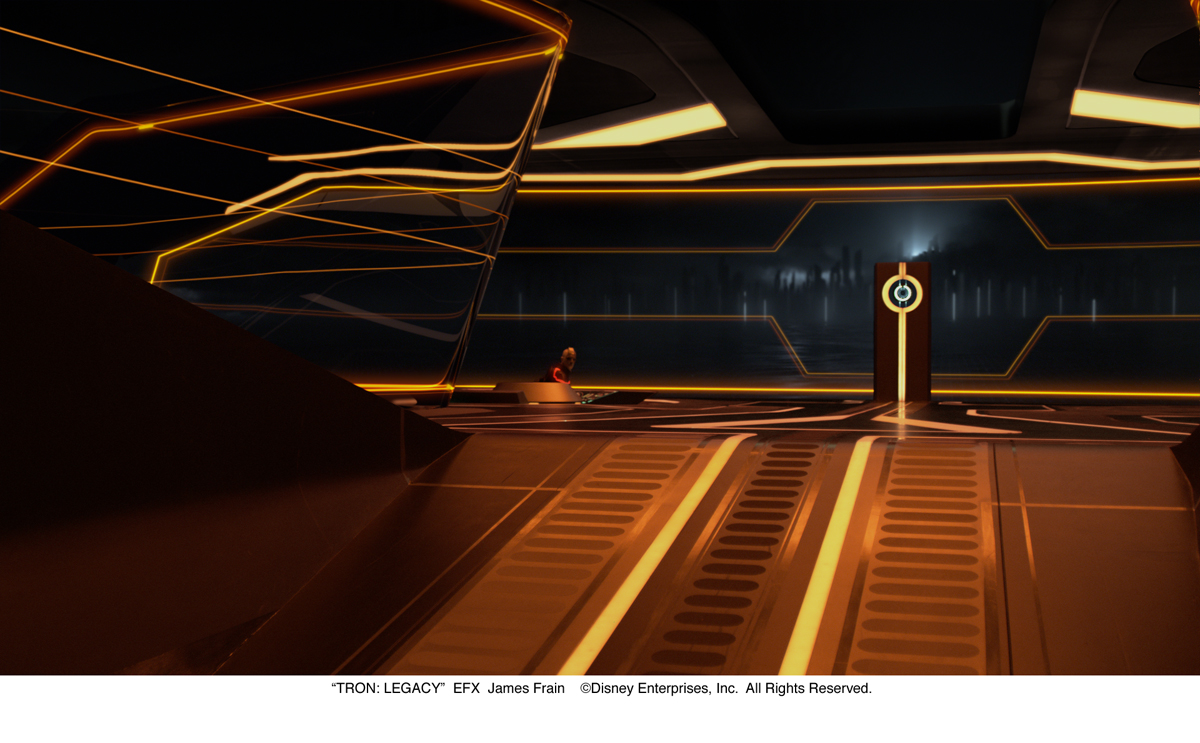 |
Did you created digital doubles?
We received them from DD for Sam, Flynn, Quorra, Jarvis, and the sentries.
How did you create the army of Clu?
Starting with the basic single sentry model that we received from DD, we created several deformed models and alternate textures to distribute variations in body type, height, and facial characteristics. We created a library of animation cycles for the actions that were required in the sequence (at rest, chanting, cheering, banging staffs), and wrote a tool to pseudo-randomly distribute the cycles, models, and textures within the scene.
What references have you received for the Rectifier?
There was a lot of amazingly detailed concept art created for the film early in production that showed the views inside the rectifier. It was always a struggle to come up with a real-world physical material counterpart, since ultimately, it was supposed to be something that existed only inside Tron World. There were discussions about the amount of cleanliness, the amount of scuffing on the floor, and what levels would be appropriate for a surface that has armies marching and tanks driving on it for years, but also, conceptually, being a perfect digital creation. That being said, we did have to match into the physical sets, though often these were replaced with wholly digital environments. The closest real-world reference we received for the Rectifier surface were photographs of black submarines.
How did you create this huge environment?
Using DD’s previz model as a size template, we remodeled the rectifier using the concept paintings and blueprints generated from the art department as reference, making sure all the detail was apparent, and that where no exact reference was available, that the style was consistent with the rest of the environment.
Have you created some set extensions for the sequence where Sam Flynn gets back the disc from its father and fights?
Yes, the ceiling in the throne room was completely replaced, as well as the glass doors. The glass windshield was created in the bridge environment. All the exteriors, including the sea of simulation, and the portal and monoliths, were created digitally as well.
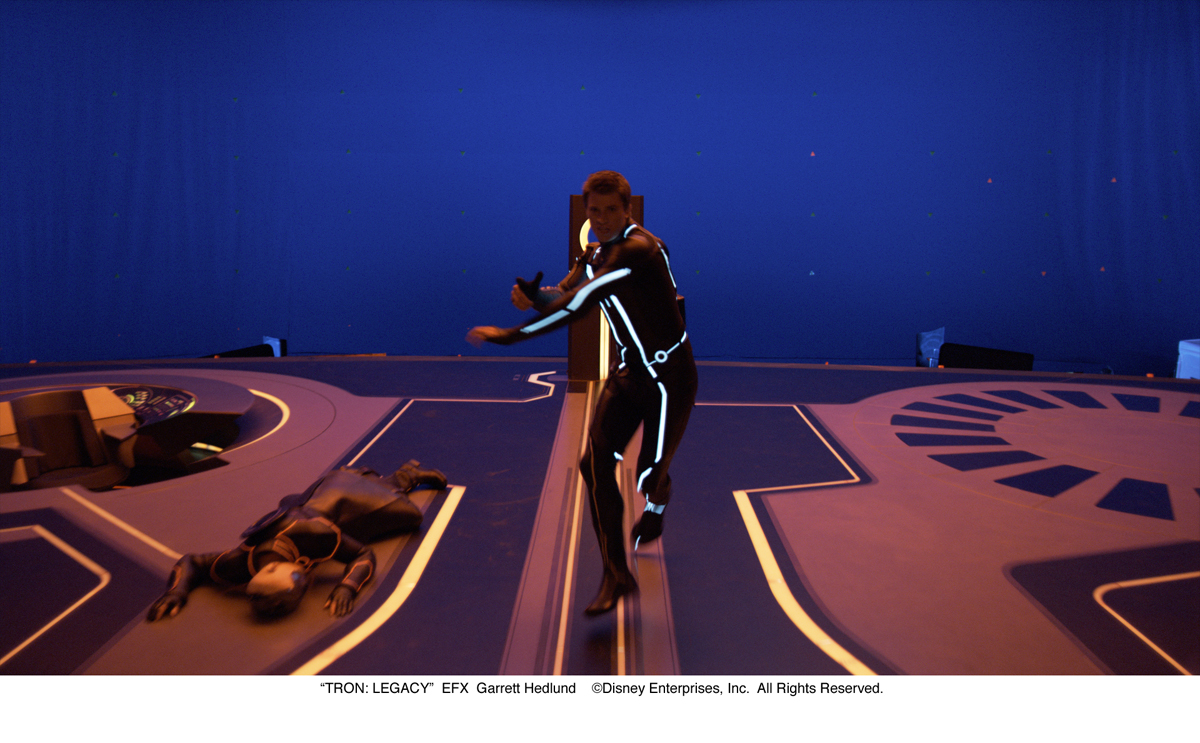 |
 |
What references have you received for the creation of the LightJet?
DD had sent us their model for the 3-man LightJet, since it was used extensively in the following sequence. We had to do some extra work on it for our sequences, since for example, the cockpit wasn’t modeled or rigged to open up in the version we received. We also had shots which showed a clearer view of the interior of the canopy, so that had to be detailed out as well.
Can you explain how you created the escape sequence of Sam Flynn and Quorra? All the shots are 100% CG?
Some were 100% CG, like the shot where they burst through the throneship glass and their chute deploys. The shot where they rush towards camera used a photographed element of Sam and Quorra suspended on a rig while the camera flew past them, and the following shot where they fly away from camera down to the floor is all-CG. When they finally crash to the floor, the actors were on a safety wire and landed on a piece of practical set (which was eventually replaced), and had a CG chute attached to them in a completely CG environment.
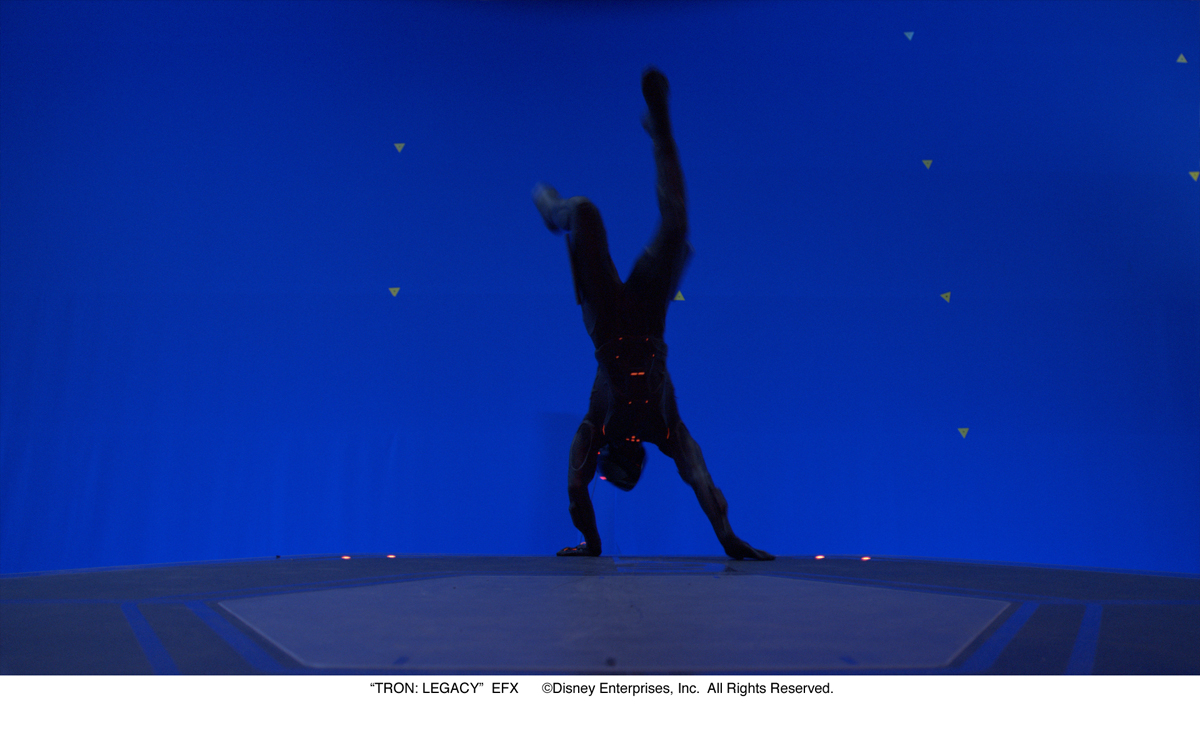 |
 |
Did the stereo aspect caused you some troubles?
There’s the obvious addition of work that comes from having to render and composite everything twice, but a lot of the trouble comes from dealing with the imperfections in the practical stereo photography. A lot of time was spent correcting vertical disparity and polarization artifacts, and making sure that the camera tracks were absolutely perfect. A lot of the usual 2D tricks that you have on a traditional monoscopic film just don’t work in stereo. Even something as simple as scaling an element up or down to change the apparent distance to camera now comes with a host of other issues such as ensuring that the IO is correct for where you want to place the element, as well as the proper convergence within the scene. Because the images were so high contrast, with bright, sharp glowlines on dark suits, we also had some serious ghosting issues, where the picture from one eye would be slightly into the image of the other eye. Fundamentally this is a problem with the projection system and the glasses used, and future technologies – for example, beaming the image directly onto the viewer’s retina – may completely eliminate ghosting as a problem altogether, even when viewing stereo films made today. For right now though, it was definitely a consideration which often caused us to have to reduce the stereo effect so the stripes wouldn’t double-up as severely.
Did Mr X Montreal worked on this show?
No.
What was the biggest challenge on this project?
There were many challenges on the project, but one of the major ones was the amount of retooling the pipeline to get in sync with what DD was doing and what they had built already. We dove head-first into V-Ray relying on some of DD’s knowledge, but ultimately needed to figure it out and R&D our own pipeline tools for it while were were in production. We also increased our renderfarm and server storage to keep up with the demands of the project.
Was there a shot or a sequence that prevented you from sleeping?
Ha.. yes, all of them.
What is your pipeline and softwares at Mr. X?
We added V-Ray to our pipeline since that’s what DD was using. Our traditional CG pipeline used Maya for modeling and animation, Houdini for lighting, and Renderman to render the images. Effects in Houdini, rendered in Mantra. Compositing is done in Nuke. For TRON, we replaced the Houdini-Renderman portion of the pipeline with Maya and V-Ray. There was definitely a learning curve, but we continue to use V-Ray on other projects now, where it’s appropriate, now that we have a bit of a tool base written to make it workable.
How long have you worked on this film?
9 months from first turnovers to final delivery.
How many shots have you done and what was the size of your team?
211 shots were worked on by our team of around 80 people.
What did you keep from this experience?
It was a great experience working on a film where the anticipation of the fans and world-at-large was so high. There’s an enormous amount of satisfaction knowing that your work is definitely going to be seen and appreciated by fans for what it is. On a lot of the films we typically work on, our presence is invisible, and the goal is to not be noticed or get in the way of telling the story. On TRON, it was very much the opposite of that, and we had to make sure that everything was absolutely perfect to withstand the scrutiny of the most discerning of audiences.
What is your next project?
Currently in production at Mr. X: THREE MUSKETEERS 3D, THE THING, HANNA, THE VOW and SILENT HILL REVELATION 3D.
What are the 4 movies that gave you the passion of cinema?
Hard to narrow it down, but: THE GODFATHER, A CLOCKWORK ORANGE, STAR WARS, 2001: A SPACE ODYSSEY.
A big thanks for your time.
// WANT TO KNOW MORE ?
– Mr. X: Official website of Mr. X Inc.
– fxguide: Tron Legacy article on fxguide.
© Vincent Frei – The Art of VFX – 2011




